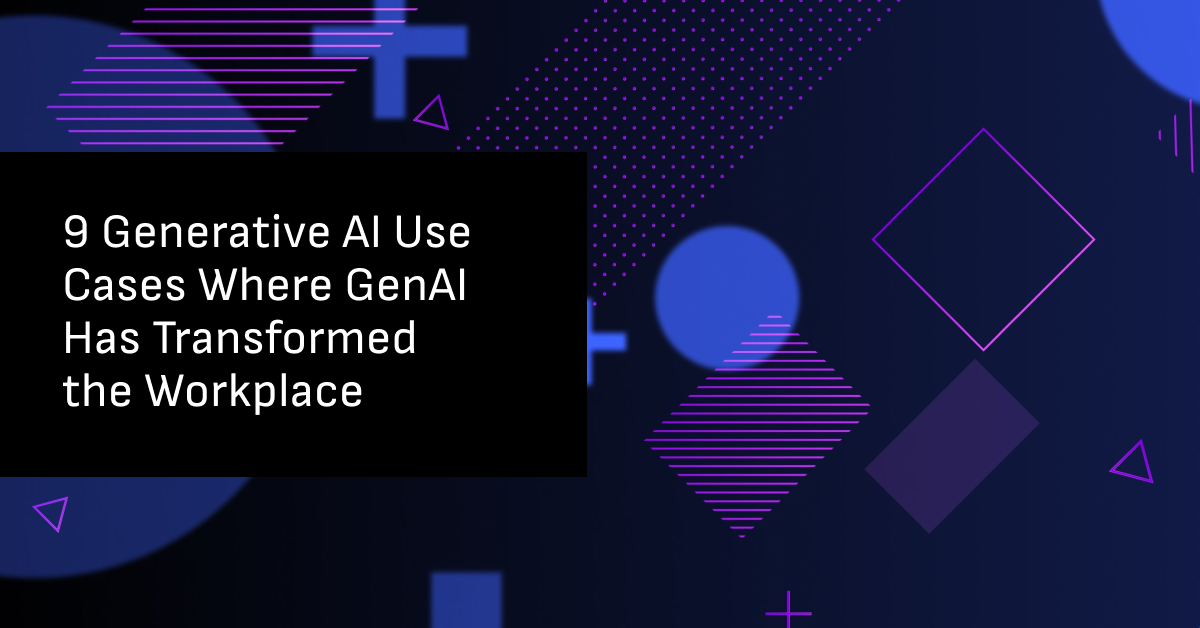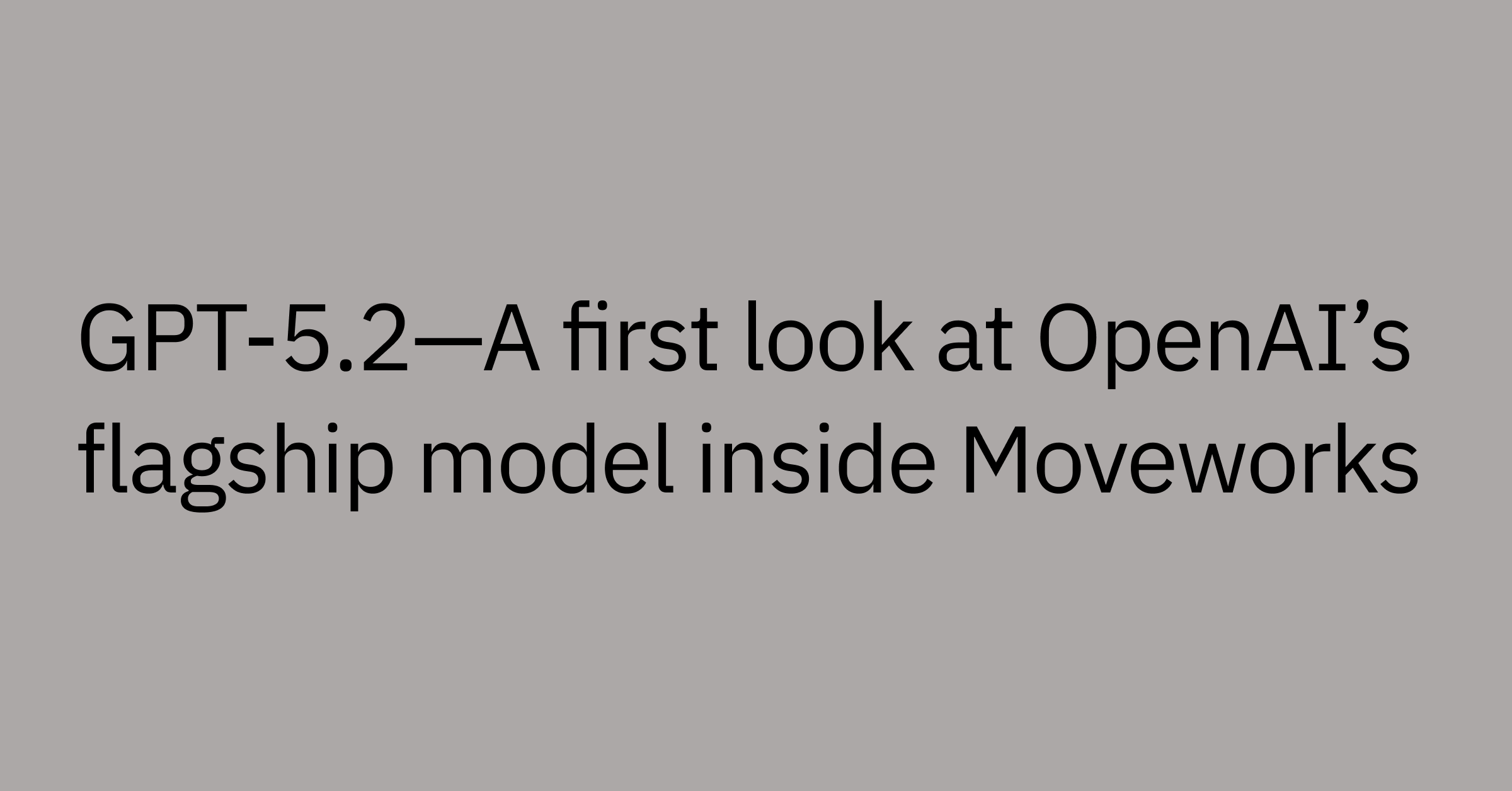Table of contents
Even though 80% of marketing teams agree that the quality of their creative assets is key to business success, you know that keeping your team’s output high-volume – and high-quality too – is no easy task.
Balancing robust output quantity with quality is a big reason why 65% of organizations regularly use generative AI in their daily workflows.
GenAI enables teams to quickly scale their workloads while adding more intelligence to the tasks they complete. The technology helps you get more done in less time and lets you explore more innovative ways to approach operational challenges.
With generative AI continuing to improve each year, multiple use cases for this technology are worth exploring.
What is generative AI?
Generative AI is a category of artificial intelligence that can "generate" written content, audio, or imagery based on training data. Generative AI systems use deep learning and large language models (LLMs) to look for structural patterns in data and leverage this information to generate relevant results.
For example, when analyzing datasets, generative AI algorithms can recognize patterns in sentence structure or word choices. This allows them to provide new responses based on their training data on different topics or execute different creative tasks.
A simple example of GenAI is the autocomplete feature in tools like messaging apps, Google Docs, or Gmail. After writing a few lines of text, GenAI can use its training data to calculate the most likely ending to a sentence and suggest ways for the user to complete it.
How is GenAI different from other types of AI?
It's important to note that not all types of AI are inherently the same. Narrow AI, also known as "weak" AI, can perform specific tasks very well. However, this form of AI, commonly found in most basic chatbots, is limited in scope. It's trained to act on small processes and cannot expand its scope beyond certain fixed boundaries.
Generative AI is different. It can leverage larger datasets and perform a broader range of functions. Not only can it quickly source data and answer questions, but it can also create new,content based on machine learning patterns.
GenAI tools often mimic how our human minds process new information, learn from it, and use it to formulate new ideas. This includes generating creative content, writing code for software development teams, or even using pre-existing operational data to help design new approaches to business security.
GenAI responses can come from training data or other sources
One important distinction is that genAI tools differ in their access to information. Some rely solely on their fixed training data, limiting their knowledge to a certain point in time.
Others leverage real-time data through techniques like Retrieval Augmented Generation (RAG), accessing search engines or databases to provide current and comprehensive responses. This distinction is crucial, as real-time data access significantly enhances the capabilities and usefulness of GenAI models.
1. Content creation
One of the most commonly used applications of generative AI is content generation. While GenAI has been in development since the early 1950s, mainstream adoption took off in 2022 with the release of ChatGPT.
Since the introduction of new AI foundation models like OpenAI’s GPT-3, users can interact directly with GenAI programs to produce custom outputs. This accessibility has made generating unique written and visual content easier using a few simple commands.
Written content
Marketing and content management teams have a lot on their plates. When they're not creating new digital advertisements or email newsletters, they're often writing blog posts and updating company websites and landing pages. Generative AI enables these teams to scale their efforts without requiring significant additional resources.
Generative AI helps content teams uncover new creative ideas while also doing the heavy lifting of producing various types of content. This includes:
- Generating more compelling ad copy across different e-commerce or social media platforms
- Producing short- and long-form thought leadership articles on a wide range of topics
- Assisting marketing teams with updating content across product listings and landing pages
One company that has quickly incorporated GenAI technology into its operations is Google. The company created its own AI solution, Gemini, and integrated the tool into many of its products. Google Search, Docs, and Gmail now leverage GenAI to create more helpful user experiences.
Visual content
Generative AI isn't limited to producing written text. It can also create images and 3D renderings commonly used by designers or digital marketing teams. What would normally take teams hours or days to produce, GenAI can generate in seconds.
Conceptualizing how to represent a new idea or prototype visually can be time-consuming. Generative AI lets you simply provide context for what you're looking to produce, and the tool will automatically generate an image that best fits the scenario.
Users can then specify any changes, such as adding or removing objects or creating different variations, until they're satisfied with the results.
DALL-E 3 is an excellent example of how easy AI-powered image generation can be. The tool integrates with ChatGPT and uses a text-based user interface to let users create everything from cartoon drawings to unique art pieces.
Video content
Video has become a valuable asset for marketing teams, especially for improving engagement with current or potential customers. Traditionally, producing videos has been costly and time-consuming, but this is no longer the case with generative AI.
Generative AI can turn longer blog posts or descriptions into high-quality video content with engaging visuals and voiceovers. Instead of hiring videographers and actors to shoot each scene, you can simply provide GenAI with a script to follow, and it can take care of the rest.
While these generated videos may have some visible differences from standard videos, AI-generated video production is becoming increasingly popular in business settings. Even major brands like Coca-Cola have already integrated the technology into their major advertising campaigns, allowing them to bring their creativity to life and push the boundaries of visual storytelling.
2. Code generation
Software and website developers are often under a time crunch to meet critical deadlines. Writing long lines of code and checking for bugs can quickly consume their time. GenAI has introduced a much more efficient method of handling these all-too-important tasks.
Generative AI tools can train in all languages, including popular coding formats. By analyzing programming data and user commands, GenAI can create entire lines of code in a fraction of the time it would take a developer to complete them.
This automation and increased efficiency frees up development teams' time to focus on testing new features or planning user experience improvements.
Companies like Amazon have already made significant investments in GenAI-enabled developer tools. Most noticeable is their Q Developer platform, which has reportedly saved them over 4,500 years of work, equating to $260 million a year.
3. Customer support
For your business to be successful, you need to be able to provide fast and efficient customer support. Generative AI has made this much more attainable by enabling personalized support capabilities regardless of location or time of day.
AI-powered chatbots and virtual assistants are a great example of GenAI's power. These responsive AI-driven interfaces operate in real-time and are easy to integrate into websites or e-commerce platforms.
Businesses can use intelligent AI assistants to create engaging customer interactions without human intervention rather than relying on internal IT or customer service teams to field customer inquiries directly.
With no waiting period and 24/7 availability, GenAI solutions can answer common questions, provide helpful resources, and even escalate support tickets to the appropriate human agents when necessary.
GenAI tools are so effective in customer support settings that most major brands have already implemented them. Businesses like Best Buy and McDonald's have officially released generative AI solutions to help provide a more personalized customer experience for everyone.
4. Medical discovery
Significant research and analysis go into the development of new medications and vaccines. Traditionally, it would take medical professionals years to create effective formulas and test new drugs before they could enter the market.
However, GenAI has now significantly streamlined medical and drug discovery processes. By processing large amounts of clinical data across multiple sources, GenAI solutions help researchers more quickly identify potential drug candidates, test hypotheses, and predict the efficacy of new drugs.
For example, Recursion Pharmaceuticals, a biopharmaceutical company in Salt Lake City, Utah, has used AI to analyze biological and chemical data for several years. Their recent collaboration with NVIDIA has created the largest GenAI-powered supercomputer available in the pharmaceutical industry.
5. Information management
Employees need easy access to the information they require to do their jobs effectively. Generative AI makes managing internal digital assets and knowledge bases much more efficient and can provide on-demand support to employees when needed.
Enterprise search and other AI-enabled solutions integrate across multiple systems, apps, and databases to create a unified source of information. Using machine learning algorithms, GenAI interfaces can source specific digital assets for employees or provide quick answers to their questions.
Creating more engaging work experiences for employees is critical to maximizing productivity levels. Medallia, a pioneer in Experience Management, knows this all too well.
By incorporating GenAI into their business, they implemented a self-serve IT management system, seeing a 95% adoption rate from customers and employees and a 34% decrease in average IT ticket resolution times.
6. Forecasting
Accurate forecasting requires careful data analysis and tracking of specific patterns or trends. Generative AI tools can carry out this process systematically while avoiding common human errors that can skew results. This allows businesses to avoid costly false assumptions, reduce operational risks, and improve decision-making as they grow.
Demand forecasting
Generative AI models analyze historical customer data and sales metrics to help businesses better understand the seasonality of their products and avoid stockouts (i.e. when a business runs out of a product). This information is valuable for predicting supply chain disruptions throughout the year while also accounting for weather disruptions, supplier delays, or unexpected spikes in demand.
Mass-merchant retailers like Walmart and Amazon actively use GenAI tools to help resellers optimize their inventory levels while minimizing the chance of stockouts. This helps their partners maximize their revenue streams and allows retailers to create better purchasing experiences for their customers.
Trend forecasting
Understanding patterns and trends is another essential element of business planning. Some GenAI tools can provide a powerful solution by being able to combine historical and real-time data and looking for anomalies or similarities.
Because GenAI can analyze multiple datasets simultaneously, businesses can gain relevant insights from various information sources at the same time. For example, platforms like Google Trends use AI to record and analyze user search patterns and social signals.
This helps the tool identify the most commonly used keywords or phrases on specific topics. These insights can be highly valuable for businesses launching new marketing campaigns or trying to understand their target demographics better.
7. Security
Proactive security planning requires intelligent threat analysis and relevant risk management protocols. AI technology provides businesses with the ability to streamline these efforts.
Certain generative AI tools can identify likely security breaches as they happen by monitoring network traffic and collecting crucial data from networked devices in real time. These tools then alert human threat response teams, which can quickly intervene before further damage occurs.
Over 55% of companies are now using AI-enabled cybersecurity measures. Platforms like PayPal have leveraged machine learning fraud detection technologies to keep their customers’ information safe without adding friction to the user experience.
8. Reporting
Generating reports is an important but often time-consuming part of any business. GenAI excels at turning large amounts of data into easy-to-understand summaries.
Instead of manually sifting through data to find the most relevant information to report on, GenAI tools can handle most of the heavy lifting for you. Users can summarize financial and compliance data with a few basic commands and even create helpful visualization tools like charts or graphs.
GenAI reporting capabilities support several organizations, including the U.K. Football Association (FA). By aggregating player data from multiple sources, the FA automatically generates detailed scouting reports, more accurately tracking player performance and identifying key areas for improvement.
9. Virtual assistants
AI-enabled virtual assistants canuse natural language processing (NLP) to understand and even learn from human interactions. They can simplify a wide range of business tasks and help businesses unlock their full productivity levels.
With AI-powered enterprise automation and search capabilities integrated across a business's entire technology stack, employees can quickly find the information they need and offload repetitive tasks to AI. This gives them more time to take on strategic tasks and increase business value.
PwC, a multinational professional services network, completely transformed its workforce by investing in its AI-enabled virtual assistant, ChatPwC. Leveraging GenAI technology, the company made over 400 operational improvements while continuously improving collaboration between internal teams and clients.
Let generative AI tools accelerate your workflows
Generative AI is a powerful solution that helps businesses simplify a wide range of administrative and creative tasks. But as helpful as GenAI is for creating content or streamlining data analysis, it's important to remember that business AI can be even more powerful when it’s agentic – or able to reason and act independently.
Agentic AI assistants combine generative AI capabilities with powerful learning and reasoning engines to take autonomous actions and improve over time. Moveworks is leading the way in agentic AI, revolutionizing how businesses like yours automate workflows. Moveworks agentic AI lets you:
- Find instant answers across systems, help your employees boost productivity
- Intelligent automation to route and resolve requests based on your business context
- Seamless integration with your enterprise systems—with a simple setup
- Scalability to grow with your organization while maintaining top-tier security and compliance
Unlike niche tools or require heavy customization, Moveworks offers a leading agentic AI platform able to integrate seamlessly with your existing workflows.
Ready to see how your enterprise can use agentic AI? Download our guide to getting started with agentic automation or sign up for a demo today.



